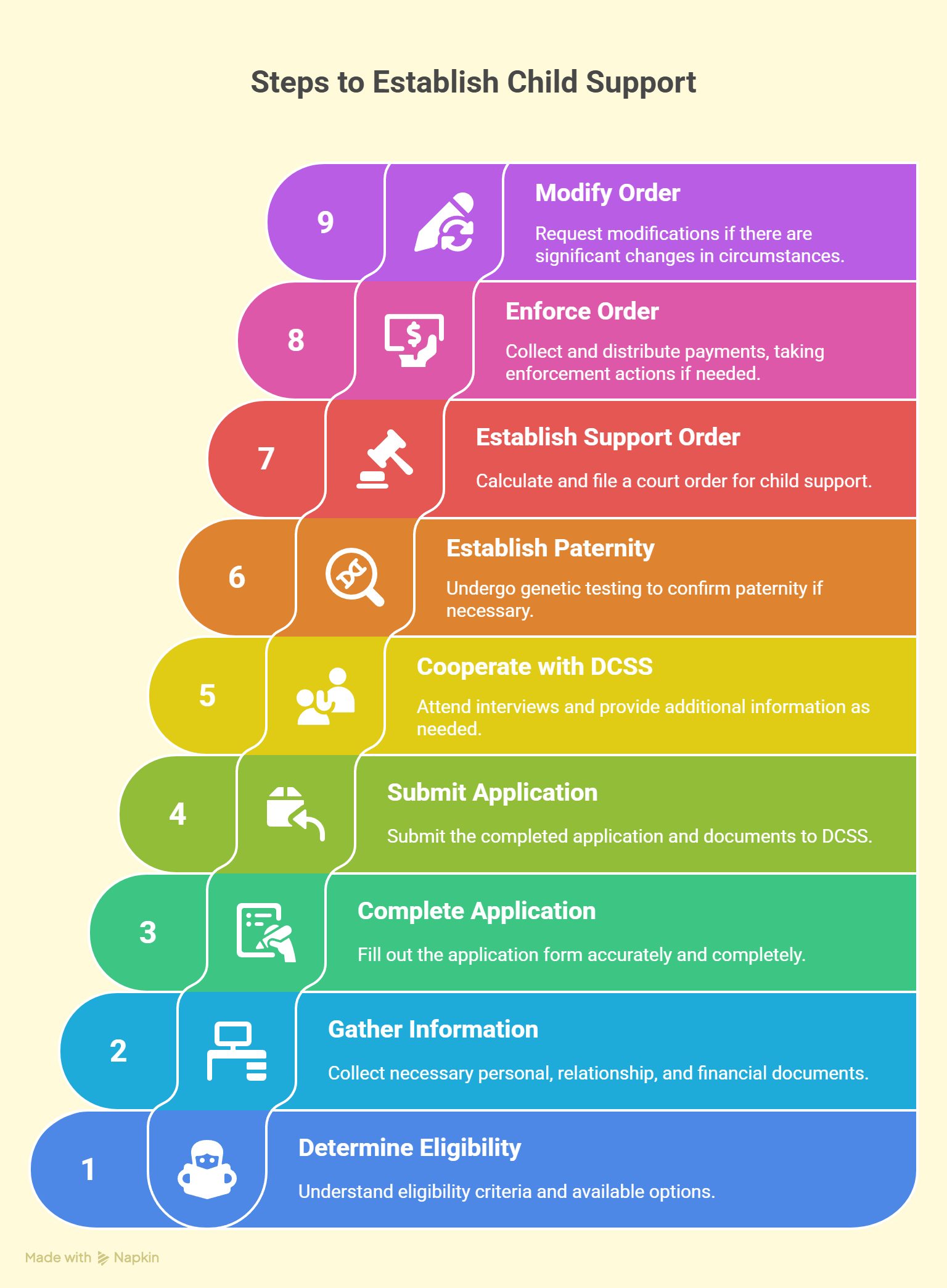Child support plays a vital role in ensuring that children receive the financial assistance they need from both parents, regardless of the parents’ marital status. In California, the process of applying for child support is designed to be accessible and supportive, whether you are a custodial parent, a legal guardian, or someone needing help with establishing parentage. The state’s Department of Child Support Services (DCSS) offers free services to help individuals set up, enforce, and modify child support arrangements, making it easier for families to get the support they deserve.
Over the years, California has streamlined the process to ensure that parents can apply conveniently and receive timely assistance. With options to apply online, in person, or by phone, the process is flexible and designed to accommodate diverse family needs. Whether you already have a court order or are seeking one for the first time, the child support system is structured to guide you step by step, from locating the other parent to enforcing payments.
This guide provides a complete step-by-step explanation on how to apply for child support in California. It covers everything from who is eligible to apply, the methods available for application, and what to expect after your case is opened. It also includes essential details about fees, legal processes, and how enforcement is carried out by the state. By following these steps, parents and guardians can secure a reliable financial arrangement for the wellbeing of their children.
Table of Contents
Step 1: Check Eligibility
Any parent or legal guardian responsible for the care of a child can apply for child support services in California. This includes individuals who:
- Do not have an existing court order for support
- Need help enforcing an existing support order
- Want to establish legal parentage for the child
- Are receiving CalWORKs or Medi-Cal benefits (in which case, a child support case is automatically opened)
There are no income limits or requirements to use these services, and both custodial and noncustodial parents can open a case.
Step 2: Choose Your Method of Application
California offers several ways to apply for child support:
2.1 Online Application
As of April 2024, California introduced a Simplified Enrollment Form which allows applicants to easily submit their information online. You can begin this process at the official California Child Support Services website: childsupport.ca.gov/enroll.
2.2 In-Person Application
Applicants may also visit their local county child support office. Each office provides assistance with form-filling, documentation, and case support. The required forms are available both in person and online through county websites.
2.3 Phone or Mail Requests
By calling the California Child Support Customer Service at (866) 901-3212, applicants can request to receive forms by mail. Some counties also accept faxed applications.
Step 3: Provide Required Information
To open a case, you will be required to provide key information, including:
- Full names and contact information for both parents
- Child’s birth certificate or identifying documents
- Employment and income details of the noncustodial parent
- Any existing court orders or agreements
- Social Security numbers (if available)
Providing as much accurate information as possible helps speed up the process of locating the other parent and enforcing support.
Step 4: Establish Parentage (If Necessary)
If the parents were not married at the time of the child’s birth, legal parentage must be established before a child support order can be made. This can be done through:
- Voluntary Declaration of Parentage
- DNA testing (arranged through the county agency)
Establishing parentage ensures that both parents have legal responsibilities and rights regarding the child.
Step 5: Set Up a Support Order
After parentage is confirmed (if needed), the child support agency works to:
- Set up a stipulated agreement if both parents agree
- Go through court if no agreement is reached
A Request for Order (FL-300) and an Income and Expense Declaration (FL-150) may be filed in family court if a legal case is already ongoing (e.g., during divorce or separation). These forms allow the court to issue a temporary or permanent child support amount based on California’s guidelines.
Step 6: Enforcement of the Order
Once a support order is in place, the child support agency can enforce it using several methods:
- Wage garnishment
- Interception of tax refunds
- Suspension of driver’s or professional licenses
- Bank levies or property liens
The state monitors compliance and ensures regular payments are made to the custodial parent or guardian.
Step 7: Annual Fees and Modifications
While applying for child support is free, California may deduct a $35 annual service fee if more than $500 in child support is collected in a federal fiscal year, unless the custodial parent receives public assistance. Additionally, child support orders can be modified based on changes in income, custody, or other relevant factors.

Parents can request a modification review through the child support agency at any time by providing updated financial information.
Applying for child support in California has become more streamlined and accessible than ever. Whether done online or through your local county office, the process ensures that children receive the financial support they deserve. From establishing parentage to enforcing payment, the state’s system is built to support families through every stage of the journey.
If you’re unsure where to start, visiting childsupport.ca.gov is the best first step. You can also reach out to your county’s child support office for direct help with your case.


